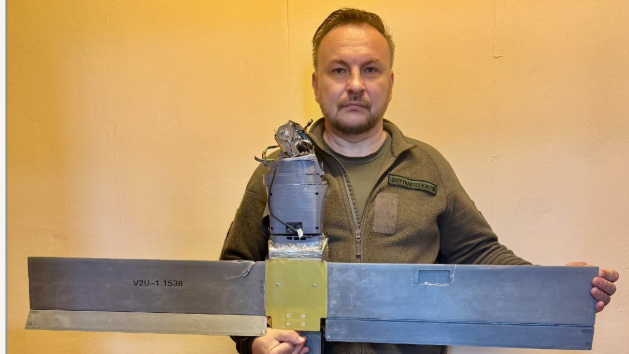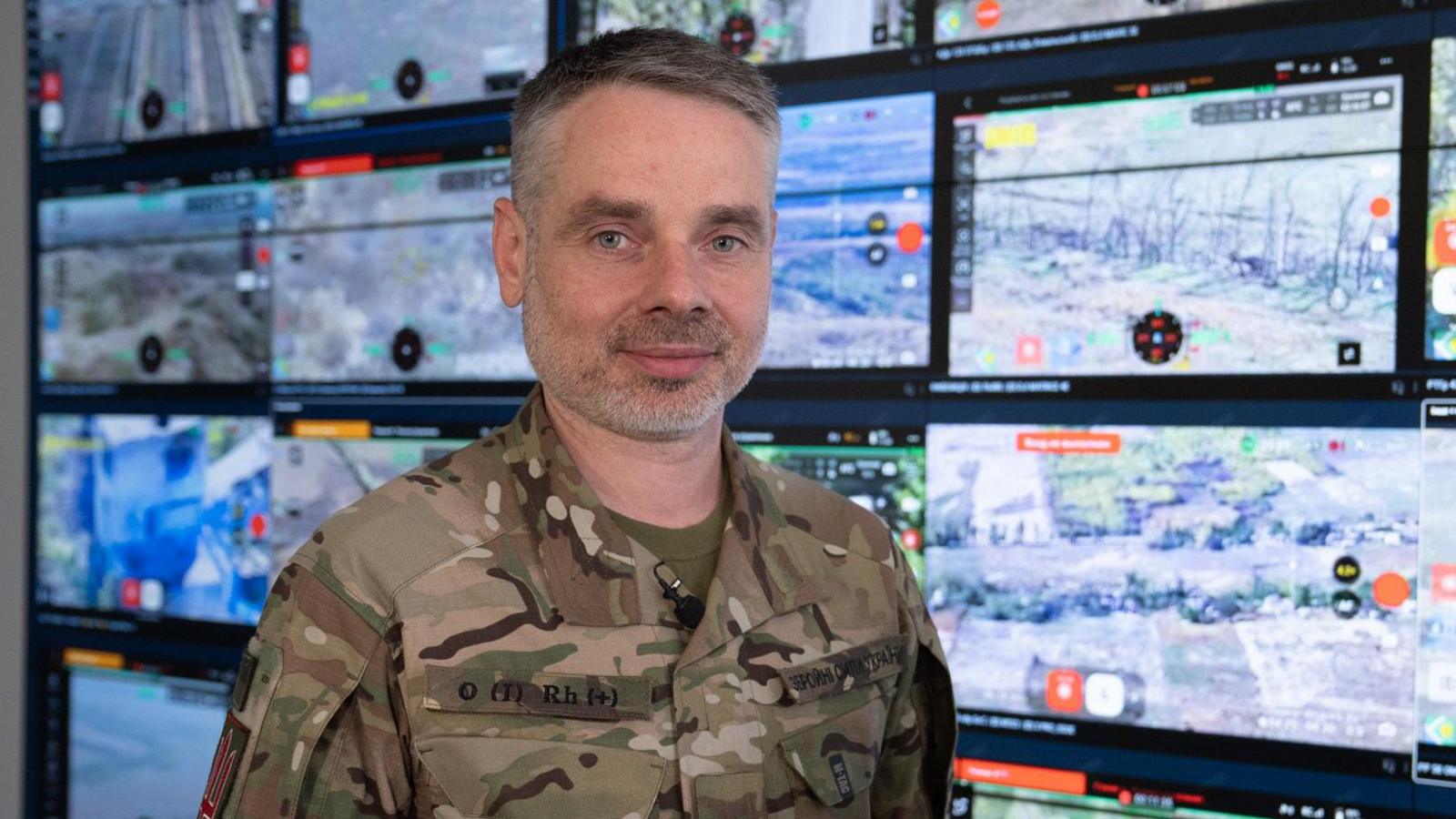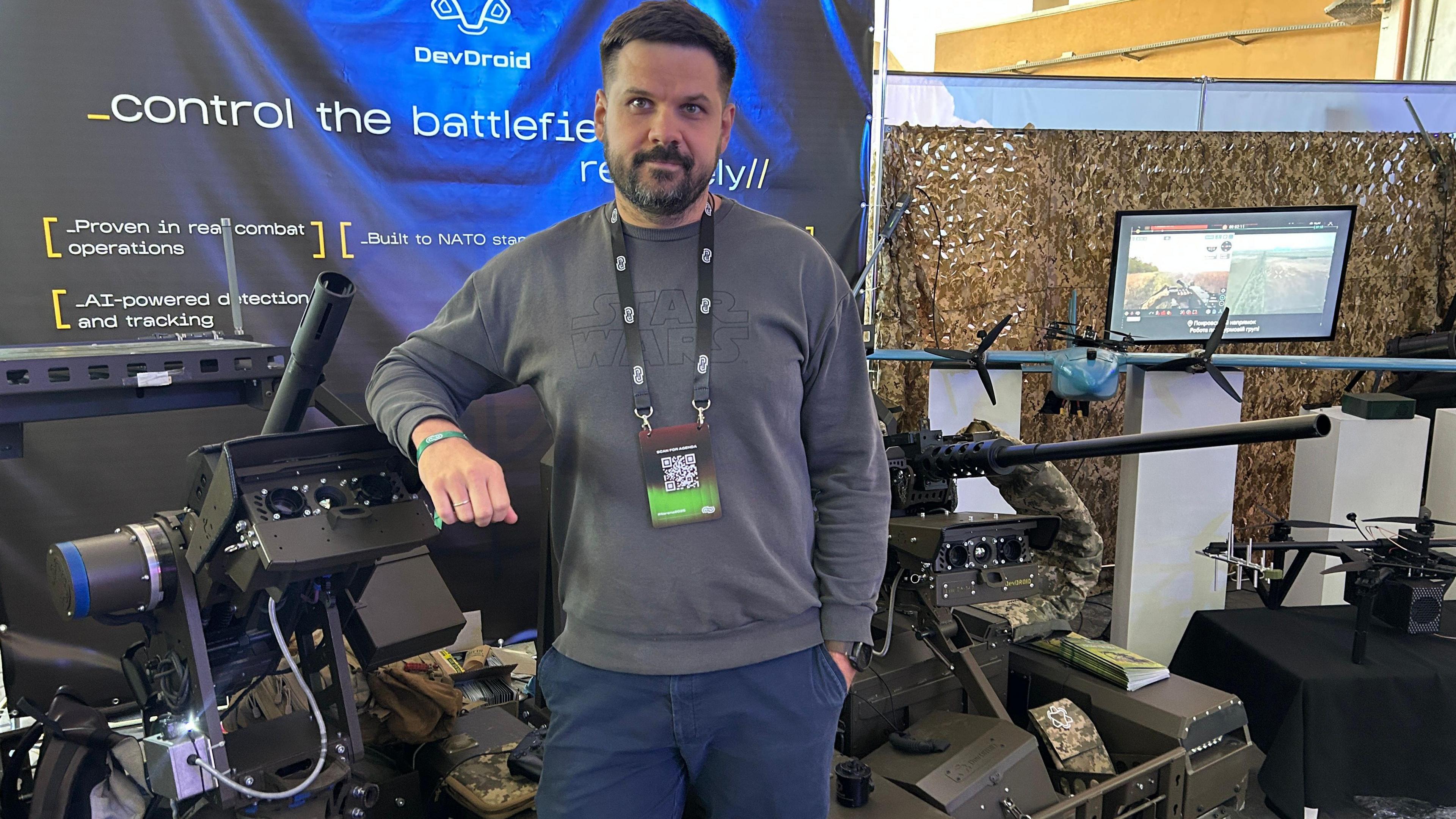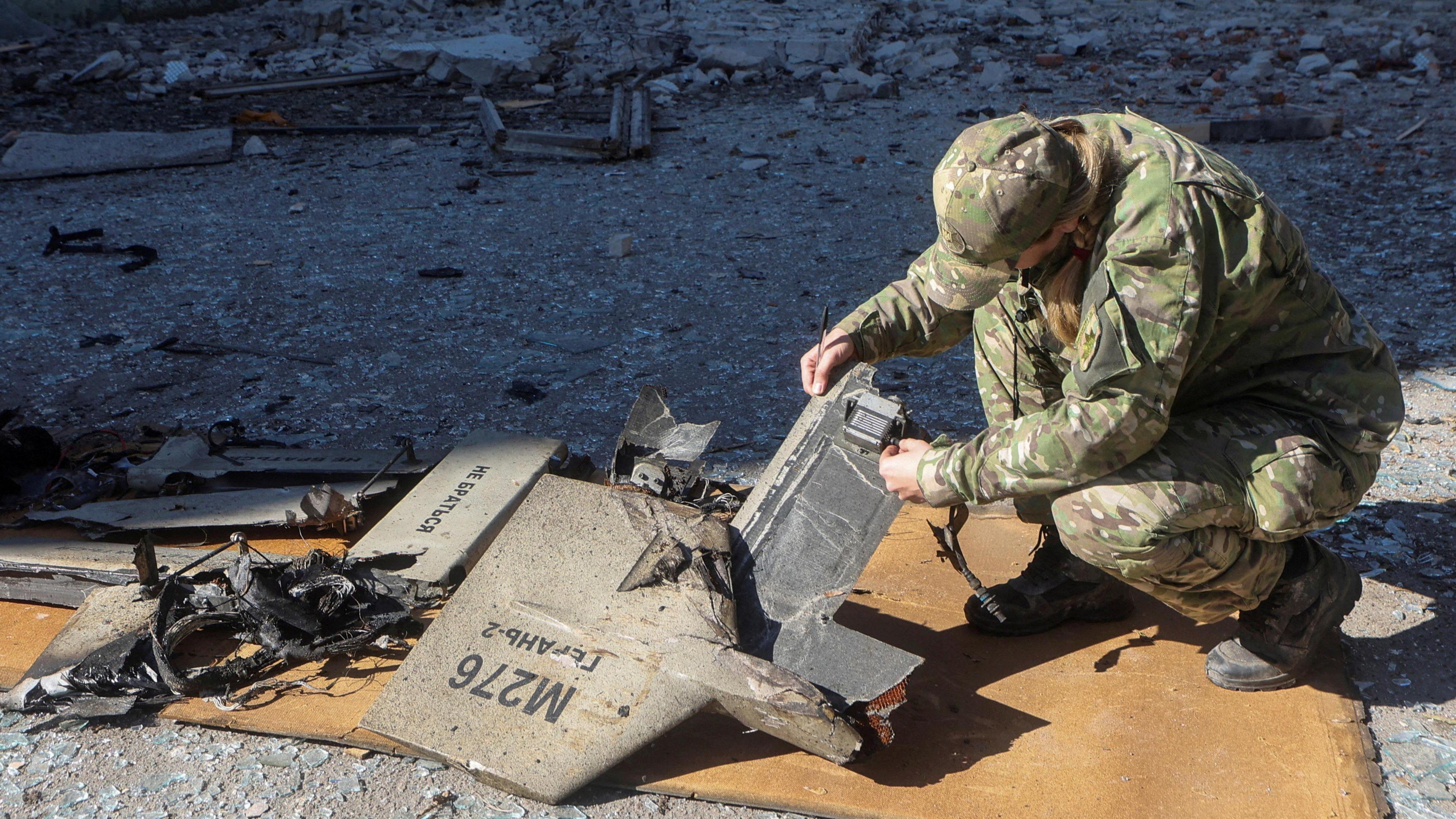The new AI arms race changing the war in Ukraine

Russian AI drones such as this present a new challenge to Ukraine, says Serhiy Beskrestnov
- Published
"This technology is our future threat," warns Serhiy Beskrestnov, who has just got his hands on a newly intercepted Russian drone.
It was no ordinary drone either, he discovered. Assisted by artificial intelligence, this unmanned aerial vehicle can find and attack targets on its own.
Beskrestnov has examined numerous drones in his role as Ukrainian defence forces consultant.
Unlike other models, it didn't send or receive any signals, so could not be jammed.
Russian and Ukrainian forces have both been testing AI in this war, and in some areas they are already using it, for finding targets, gathering intelligence and de-mining.
And for the Ukrainian army, AI has become indispensable.
"Our military gets more than 50,000 video streams [from the front line] every month which are analysed by artificial intelligence," says Ukraine's deputy defence minister, Yuriy Myronenko.
"This helps us quickly process this massive data, identify targets and place them on a map."

AI processes the feeds from Ukraine's front line, shown here behind Ukraine's deputy defence minister Yuriy Myronenko
AI-empowered tech is seen as a tool that can enhance strategic planning, make the most of resources and ultimately save lives.
But when it comes to unmanned weapons systems, it is also transforming the battlefield.
Ukrainian troops already use AI-based software so that drones lock on a target and then fly autonomously for the last few hundred metres until the mission is over.
Jamming is impossible and shooting down such a small flying object is not easy.
Ultimately these systems are expected to evolve into fully autonomous weapons that can find and destroy targets on their own.
All a soldier will need to do is press a button on a smartphone app, explains Yaroslav Azhnyuk, chief executive of Ukrainian developer The Fourth Law.
The drone will do the rest, he says, finding the target, dropping explosives, assessing the damage and then returning to base.
"And it would not even require piloting skills from the soldier," he adds.

Vadym's company DevDroid produces remotely controlled machine guns that can track targets with the help of AI
Interceptor drones with that kind of automation could significantly strengthen air defences against Russian long-range attack drones, such as the notorious Shaheds.
"A computer-guided autonomous system can be better than a human in so many ways," says Azhnyuk. "It can be more perceptive. It can see the target sooner than a human can. It can be more agile."
Yuriy Myronenko says that kind of system does not exist yet, but he suggests Ukraine is close to finishing its development. "We have partly implemented it in some devices," says the deputy defence minister.
There could even be thousands of such systems in place by the end of 2026, claims Azhnyuk.
But Ukrainian developers are cautious about fully making use of defence systems that rely entirely on AI, with no human involvement. The risk is that AI may fail to distinguish a Ukrainian soldier from a Russian, as they may be wearing the same uniform, says Vadym, who declined to give his surname.
His company DevDroid makes remotely controlled machine guns, that use AI to automatically detect people and track them. Because of concerns over friendly fire, he says they don't have an automatic shooting option.
"We can enable it, but we need to get more experience and more feedback from the ground forces in order to understand when it is safe to use this feature."

AI interceptor drones could defend Ukraine against Shaheds, Iranian-made drones used by Russia
There are also fears that automated systems will violate the rules of war. How will they avoid harming civilians, or distinguish soldiers who want to surrender?
For the deputy defence minister, the final decision in such circumstances should rest with a human, although AI would make it "easier to decide". But there are no guarantees that states or armed groups will adhere to international humanitarian norms.
So counteracting these systems becomes even more critical.
How do you stop a "swarm of drones" when jamming or using jets, tanks or missiles is rendered ineffective?
Ukraine's highly successful "Spider Web" operation, when 100 drones targeted Russian air bases last June, was probably assisted by AI tools.
Many in Ukraine fear that Moscow will copy that tactic, not just on the front line but beyond it too.
Ukraine's Volodymyr Zelensky warned the UN last month that AI was contributing to "the most destructive arms race in human history".
He called for global rules for the use of AI in weapons, and said the issue was "just as urgent as preventing the spread of nuclear weapons".